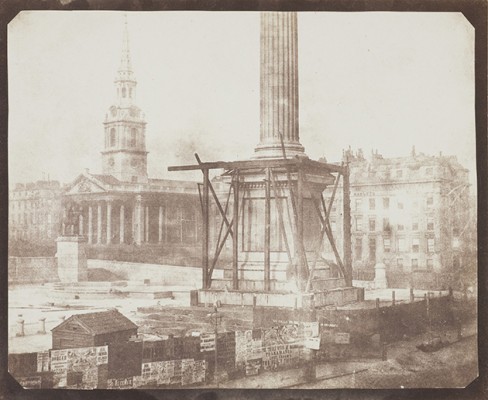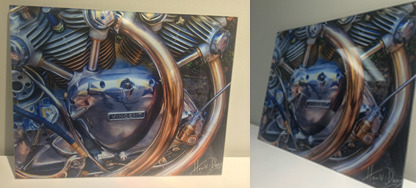Learn about why Jim LaSala prints his photographs and uses Moab Paper for his fine art prints. "I printed this image on juniper which has tremendous color latitude and brought out the color exactly the way I had seen." Jim LaSala specializes in Fine Art Photography, Portraiture and Street Documentary.
6 Reasons Why Photographers Should Print Their Photos
In an age where we rely on technology for just about everything that we need, we tend to neglect or forget about the analog aspects of life. This is particularly true for the media we consume, which are largely in digital format—people rarely keep physical media like videotapes, audio CDs, and of course, printed photos.
For instance, most photographers today have thousands and thousands of images saved on their memory cards and other storage devices, but have little to no printed copies. Unlike earlier analog photographers who had to use darkrooms to make prints just to be able to see their images, many shutterbugs of the digital era no longer keep physical copies (whether on film or in a printed photo) of their work.
But what happens when you lose all of the digital photos you saved in your computer or shared online? That’s where printing comes in.
You might be wondering why printing is important—especially for photographers, who tend to share their work solely on their online websites or social media pages. Here are some reasons why photographers (like yourself) should consider printing their photos:
1. It’s a better way to look back at old memories.
Do you ever find yourself wanting to reminisce about the past? Baby pictures, family reunions, high school parties, weddings, and the like? Having these precious memories on print is a better option for when you’re feeling a little nostalgic. Why? It’s simply a better experience to be able to go through a photo album as opposed to swiping left or right on a mobile device, or pressing buttons on a computer.
Another upside to having prints is you can display your favorite shots (or your most treasured memories) in your home or office. After all, what’s the point of taking all those beautiful pictures if you’re going to keep them stuck in a digital device? All you need is a good printer and some fine art paper, and you’re all set to enjoy those photos in a more meaningful and tangible way.
2. They technically last longer than digital copies.
Unlike digital pictures, actual printed copies have a longer lifespan. Think of it this way—you most likely still have copies in your family albums of decades-old photos from when your parents (or grandparents) were still young. Sure, they’re pretty battered and discolored, but they’re still there. On the other hand, the same probably can’t be said for those random selfies or artsy photos you saved on MySpace or Friendster.
When you upload pictures to social media, photo hosting sites like Flickr, or to paid cloud storage servers, there’s always a chance that they will get permanently deleted. The same goes for your computer storage or your hard drive. They can get corrupted or even lost—which means you lose your photos in the process.
If you want to get started on printing your work, make sure to choose high-quality photo paper to ensure the longevity of your prints.
3. You can display them anywhere you like.
Another advantage of printing your photos is that you can display them anywhere. As a professional photographer, you’d want to show off your best work, whether in your home, at your office, or in your studio.
Many photographers these days are content with displaying their work on social media, but there’s still something more impressive and organic about having large, blown-up prints of your favorite photos. It really shows off your skill, because plenty of photos can look good on a computer or mobile device, but not all of them will look good in print.
4. It makes you a better photographer.
Nowadays, thanks to Instagram, pretty much anyone can be a photographer. But as previously mentioned, it’s easier to shoot photos for social media than for print, and by printing your work, you force yourself to really perfect everything down to the last detail and ensure that your shots look good on both print and digital.
Printing also allows you to understand your work better. How? It helps reveal things you wouldn’t have normally seen on a digital screen. Seeing your photos in print will allow you to see what your (and your camera’s) strengths and weaknesses are.
5. You get to learn a new craft.
Photographers spend years learning how to use their cameras—but they usually don’t stop there. Back in the days of analog photography, you had to learn how to use a darkroom and develop your own photos. These days, photographers no longer need to learn how to develop film, but they do need to learn other skills, like basic photo editing and digital manipulation. Some even take it a step further by learning how to properly print their photos as well.
Printing your photos allows you to learn a new craft—from understanding color management down to choosing the right printer, ink, paper to use in order to produce high-quality prints of your work. Once you master this part, you increase your skill set as a photographer.
And the best part? You won’t have to pay someone to do it for you.
6. It allows you to expand your photography services.
Adding photo printing to your photography package allows you to provide a more comprehensive service. Aside from giving you the option of earning extra cash, printing gives you the opportunity to deliver the best possible output for your clients. After all, imagine taking the time and effort to capture all of those perfectly composed and exposed photos, only to have them look horrible once the client has them printed elsewhere.
When you do your own printing, you retain control over image quality, size, and the overall presentation, so you get to ensure the quality of the final product.
Printing allows you to become a full-service photographer, which can help you attract both potential and long-time clients and take your business to the next level.
Photographers are Sleepwalking into a 'Photographic Armageddon'

"Photographers must print images they want to preserve, or treasured photos may be unavailable to future generations when digital storage media wears out or becomes obsolete." -Chris Cheesman
Amateur Photographer Magazine reports the "stark warning from the Royal Photographic Society (RPS) and Photo Marketing Association after Google vice-president Vint Cerf recently warned of a ‘digital dark age’ where data stored on computers will be lost for ever.
"Speaking at a meeting of the American Association for the Advancement of Science in San Jose, California, Cerf said last month: ‘When you think about the quantity of documentation from our daily lives that’s captured in digital form, like our interactions by email, people’s tweets, and all the World Wide Web, it’s clear that we stand to lose an awful lot of our history.’
Turn the clock back 175 years when the emerging photographic trend of the day was more salt-print than selfie. Photography pioneer Fox Talbot was busy churning out prints from the earliest form of paper photography.
Yet, Fox Talbot’s work lives on today, bringing history to life in an exhibition at Tate Britain that documents daily activities and key moments of the mid-19th century, such as the building of Nelson’s Column."
Read more at Amateur Magazine.
Tamrac's Winter Wish List Giveaway
Be sure to enter in Tamrac's Winter Wish List giveaways including the prize of 3 Moab sample boxes along with many others. If you’re feeling lucky, this might make your holidays that much better. Good luck!
Looking to Mount your Slickrock Silver?

Moab's new Slickrock Metallic Silver created a jaw-dropping repsonse from our audience. The only greater response we recieved was towards the Slickrock Metallic Silver face-mounted to Acrylic. This has stirred up a tremendous amount of interest in Slickrock Silver. The image above is an image by Harold Davis done by Lamin-8.
The process requires 3 components to our prints: Slickrock Metallic Silver, an adhesive film and the acrylic.
Our recommendation?
For laminating use a high grade clear adhesive film from MacTa
For the acrylic use a high grade plexi glass. Ensure that the plexi glass does not contain any gas as once the print is sealed it will look to escape and create bubbles in the print. Here are some grades we suggest from Acrylite here and here.






